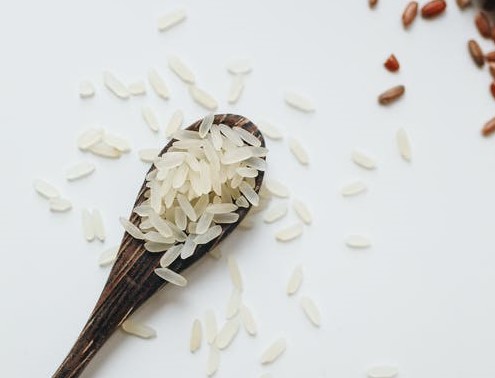
Agricultural News
Lasting Demand Growth for Aromatic Rice Could Transform U.S. Rice Industry
Thu, 16 Sep 2021 09:57:26 CDT
 U.S. consumer demand for aromatic specialty rice has steadily increased in recent decades as demographics change and consumer preferences evolve. Imports of jasmine rice from Thailand and basmati rice from India continue to reach record levels in response to U.S. demand growth, which is expected to continue climbing.
U.S. consumer demand for aromatic specialty rice has steadily increased in recent decades as demographics change and consumer preferences evolve. Imports of jasmine rice from Thailand and basmati rice from India continue to reach record levels in response to U.S. demand growth, which is expected to continue climbing.
According to a new report from CoBank's Knowledge Exchange, U.S. rice growers, millers and merchandisers can find opportunity in the rapidly growing domestic market for aromatic rice. However, doing so will require the supply chain to adjust and U.S. rice to invest in seed genetics, milling assets and consumer marketing.
"Fragrant or aromatic rice is clearly the growth opportunity for the U.S. rice industry," Tanner Ehmke, lead specialty crops economist with CoBank, said. "Production and processing obstacles would need to be overcome but capturing share of the fast-growing domestic market could transform the U.S. rice industry, and ultimately position it to become more competitive in export markets around the world."
If production, handling, and marketing of U.S.-fragrant rice varieties is scaled sufficiently, the U.S. could potentially capture overseas markets and grow its rice export footprint into other key markets in the Americas, Europe and the Middle East, added Ehmke.
Headwinds Linger for U.S. Rice
Over the last four decades, imported Asian rice has captured a significant share of the U.S. rice market. Since 1980, U.S. rice imports have grown from nearly zero to over 1.1 million metric tons (MMTs), while U.S. rice consumption has grown from 2.0 MMTs to nearly 5.0 MMTs. Nearly one-third of that growth has been satisfied by imported rice, specifically aromatic long-grain varieties.
Across Asia, governments have stepped up price supports to farmers through rising minimum support prices and subsidized inputs, putting abundant rice on the global market. The rise in exportable rice supplies in Asia has simultaneously competed with U.S. rice exports into the Americas, the Caribbean, and key importing regions. U.S. rice exports have been stagnant in recent years.
Further complicating matters for U.S. rice exporters is that some foreign buyers perceive U.S. hybrid rice as lacking quality and consistency. Additionally, in import markets where quality is nearly as important as price, the U.S. rice producers' propensity to grow high-yielding hybrid rice has diminished demand for U.S. rice. Without adapting, the U.S. rice industry will remain largely dependent on an export market that has become tepid toward U.S. rice.
Growth Opportunities Require Investment and Innovation
Currently, U.S.-grown aromatic rice comprises less than 5% of the domestic market. Capturing additional share and premium prices will require investments that guarantee identity preservation throughout the supply chain.
To compete with well-known and trusted aromatic imports, the U.S. rice industry will need to invest in storage, transportation and milling assets, and gain cooperation with grocery retailers. The industry must also continue to invest in seed genetics to meet millers' and consumers' demands for quality, while meeting farmers' expectations for yield.
The challenges associated with producing, processing and marketing U.S. aromatic rice at scale are significant. However, the risk in the status quo is that domestic demand may continue to shift further away from domestically grown conventional rice to premium aromatic imports. Conversely, if a ramp up of U.S.-grown fragrant rice production succeeds, it could transform the stagnant U.S. rice industry and make the U.S. a competitor with Asia in markets around the world.
WebReadyTM Powered by WireReady® NSI
Top Agricultural News
More Headlines...



















